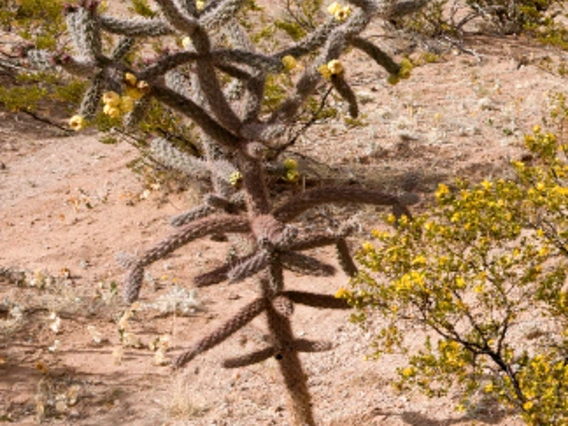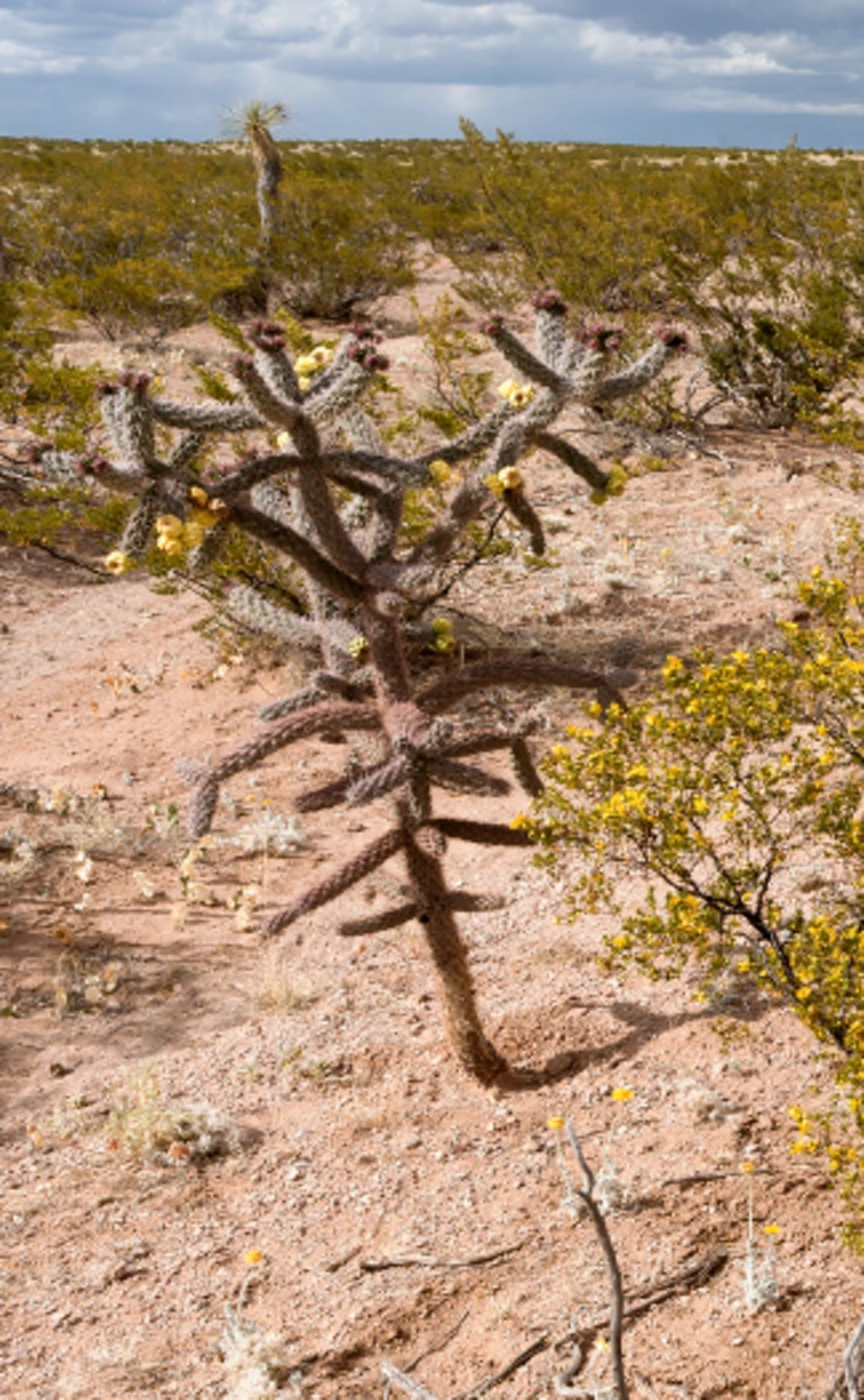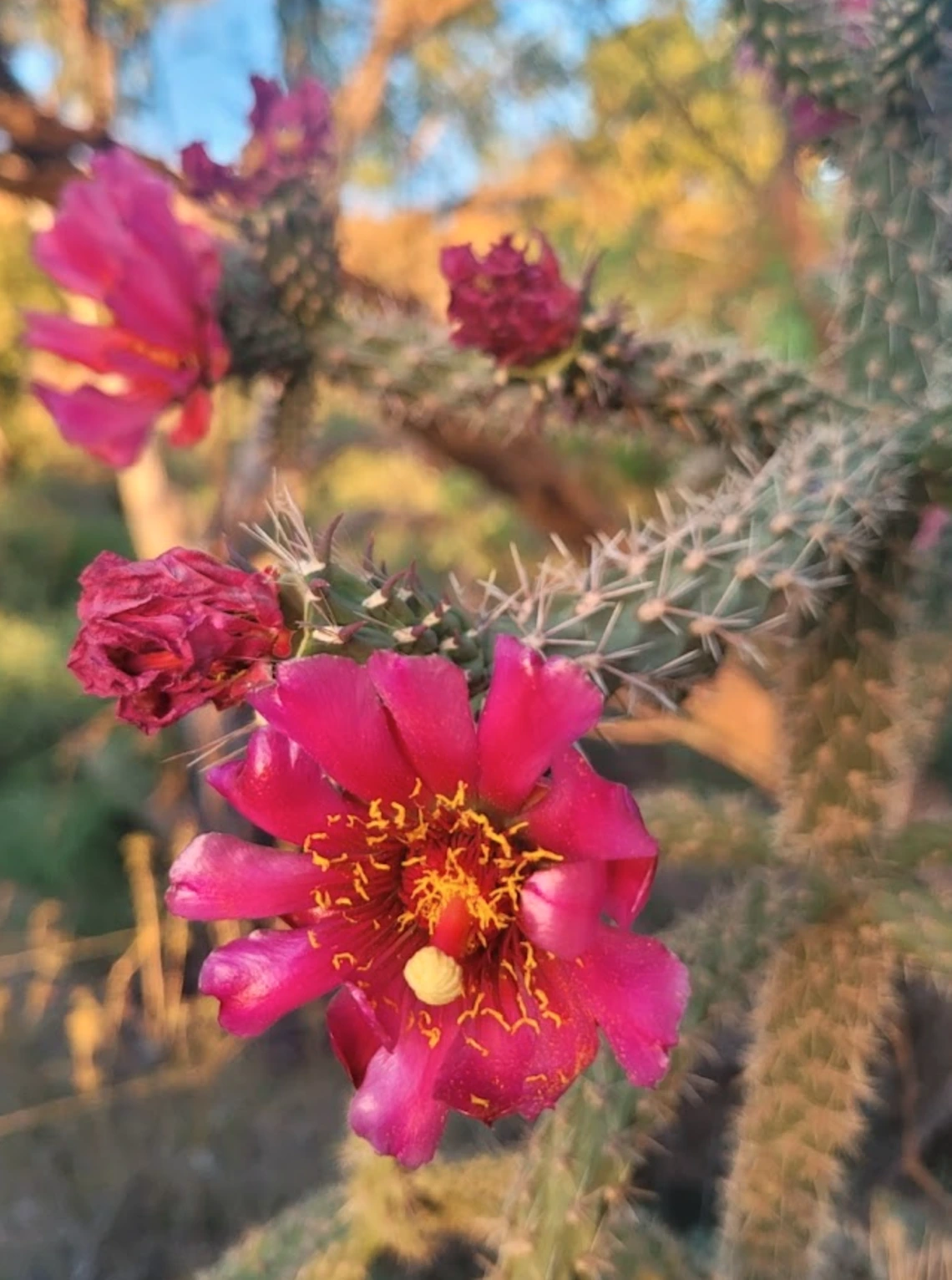Family: Cactaceae
Compound: Cyl spi
Synonyms: Cylindropuntia imbricata subsp. spinosior, Opuntia spinosior, O. whipplei var. spinosior
Geographic Origin: AZ, NM, Northern MX
Characteristics: A small to medium shrub like cactus that typically grows between 0.9-2.7m (3-6ft) tall. It has cylindrical, succulent to woody stems, which are made up of short segments, typical of the Opuntiodeae subfamily. The stems are a green to bluish-green color but can become red or purple due to sun stress. Stems are covered with sharp spines growing from clearly raised, oval-shaped tubercles. Spines emerge from areoles in groups of 10-20. These become interlaced with those on adjacent aeroles. The spines, though usually tan, range in color from pink to brown and usually have a white-colored sheath, though these can fall off. These spines provide defense against predators as well as the harsh sun. Flowers appear in late spring to early summer and are 3.8-5cm (1.5- 2in) in diameter. Flowers are various shades of purple or magenta, and followed by fleshy, cylindrical yellow (sometimes tinged red or purple) fruits with pronounced tubercles, and few spines.
Natural History: Found between 609-1981m (2,000-6,500ft) in flats, valleys, desert grasslands, and plains. Used as nesting sites by many bird species due to protective, spiny arms. Fallen stems used by packrats for nest construction.
Cultivation Notes: Thrives in full sun and well-drained soils. It is highly drought-tolerant and needs minimal watering once established. This cactus is generally propagated through stem cuttings, which should be left out in open air to let wounds callous before being planted in soil and watered sparingly. Care should be taken to handle the plant with tools or protective gloves due to its sharp spines.
For general plant propagation information, click here
Ethnobotany: Baked flower buds and fruit considered a staple food source by Tohono Oʼodham. Its dense spines and growth form make it a good choice for natural fences and barriers in desert gardens.
Citations:
Southwest Desert Flora. Retrieved April 29, 2024.
American Southwest. Retrieved April 29, 2024.
SEINet Arizona-New Mexico Chapter. Retrieved April 29, 2024.





